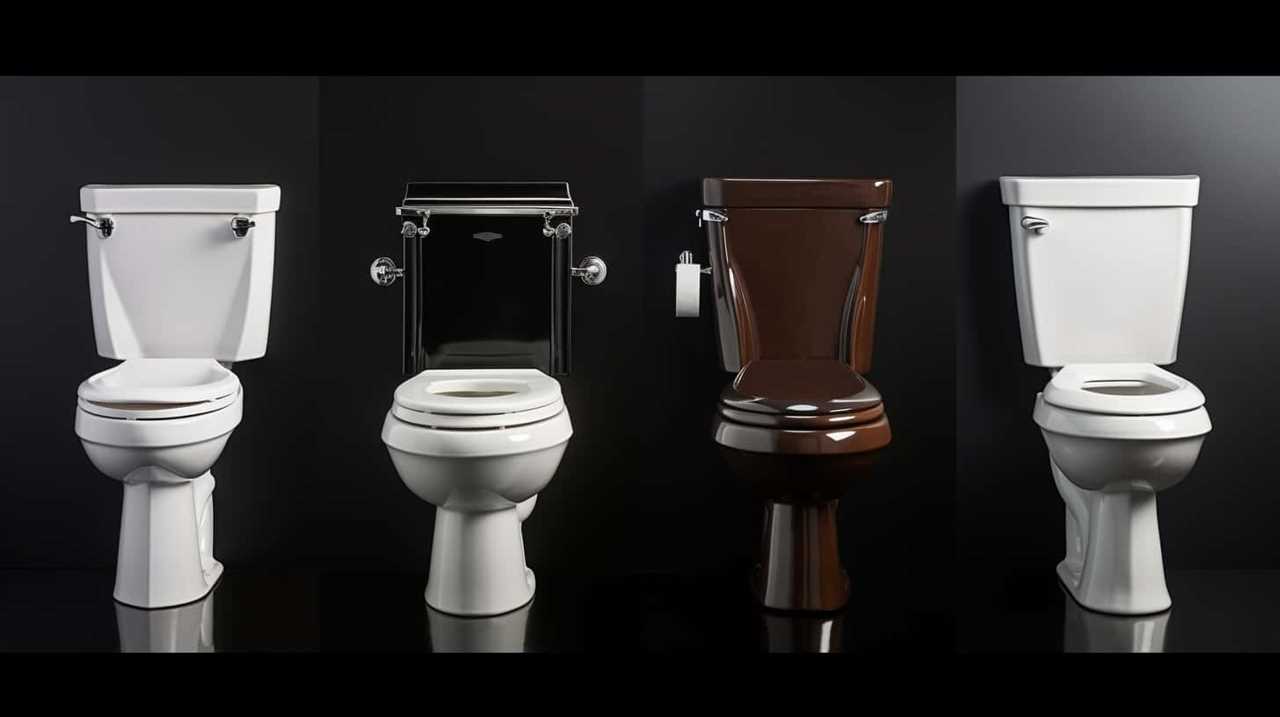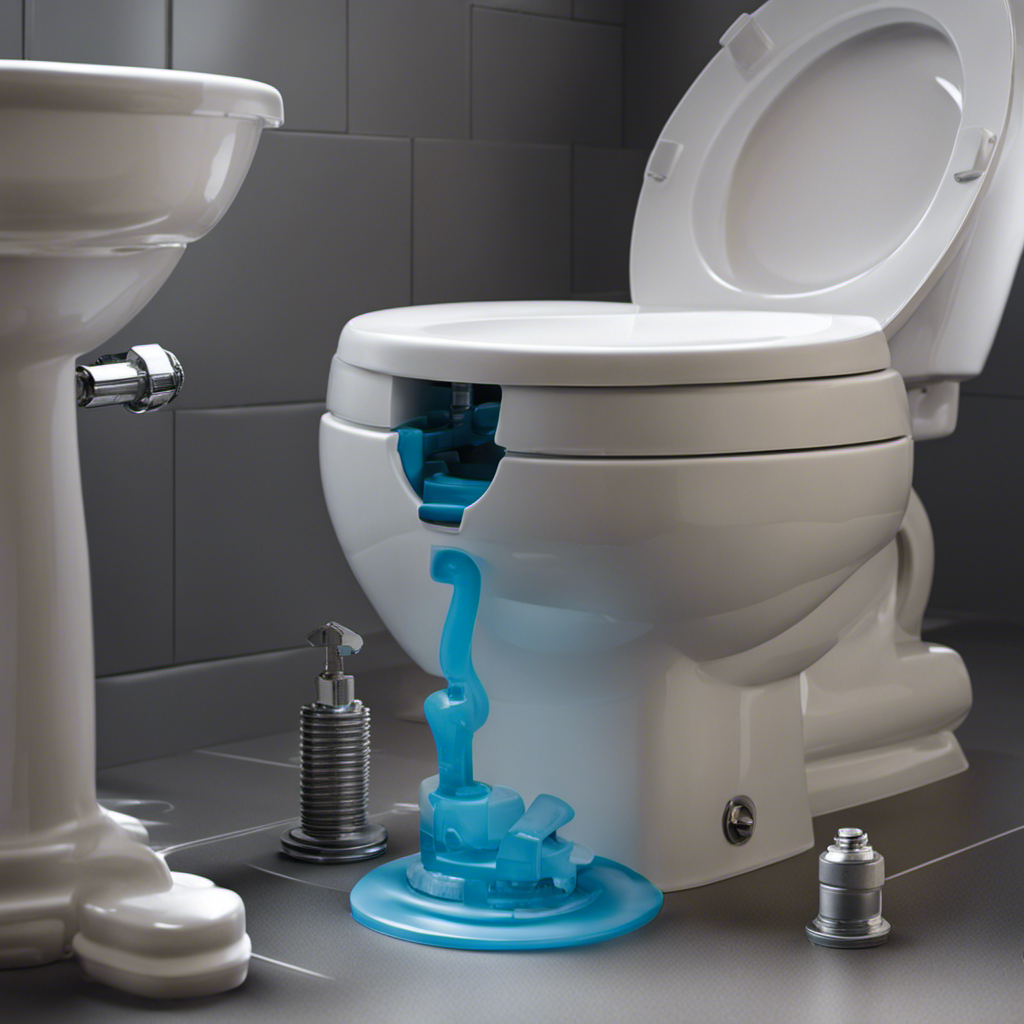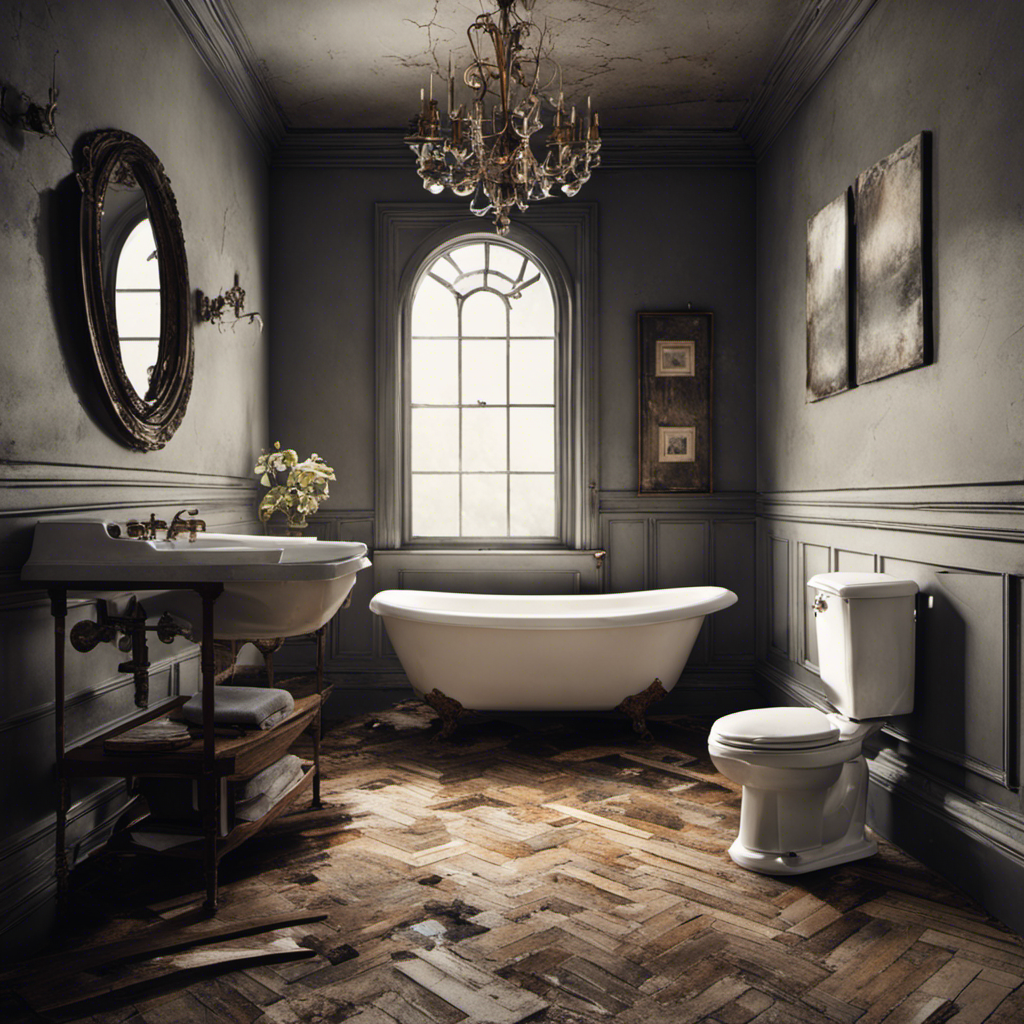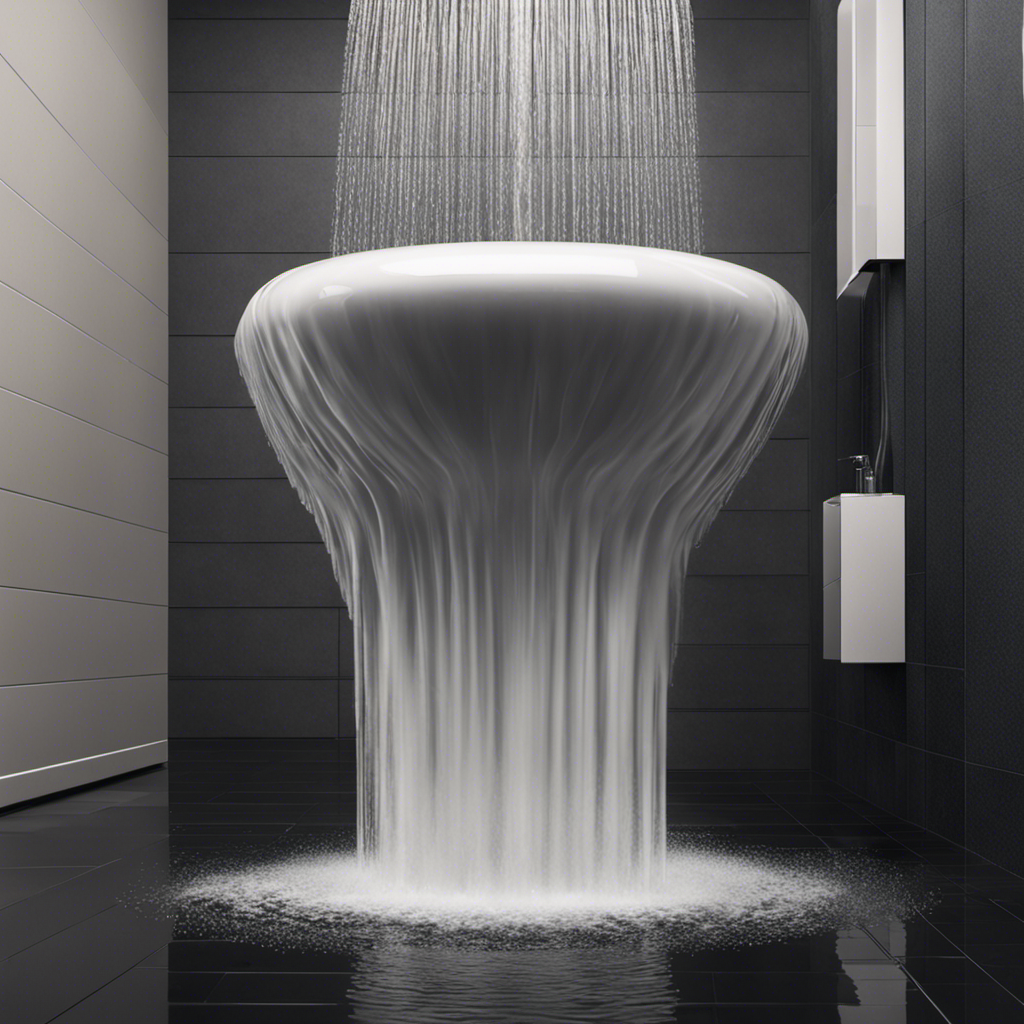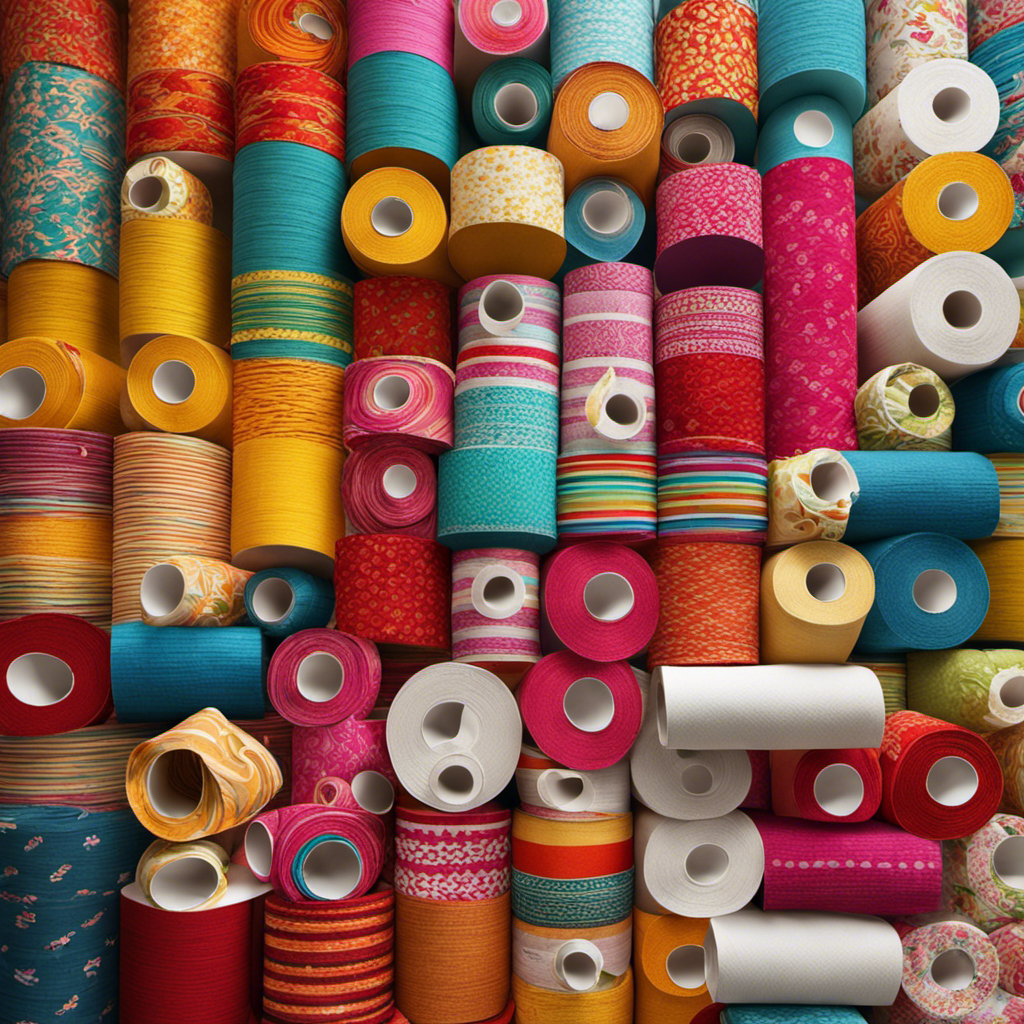Have you ever been curious about the purpose of that small chain in your toilet? Worry no more, as we’re here to demystify it for you.
In this article, we will explore the anatomy and function of the toilet chain, as well as how it initiates the flushing process.
We’ll also troubleshoot common issues and provide tips for maintaining a healthy toilet chain.
So, get ready to master the inner workings of your commode and bid farewell to any flushing woes. Let’s dive in!
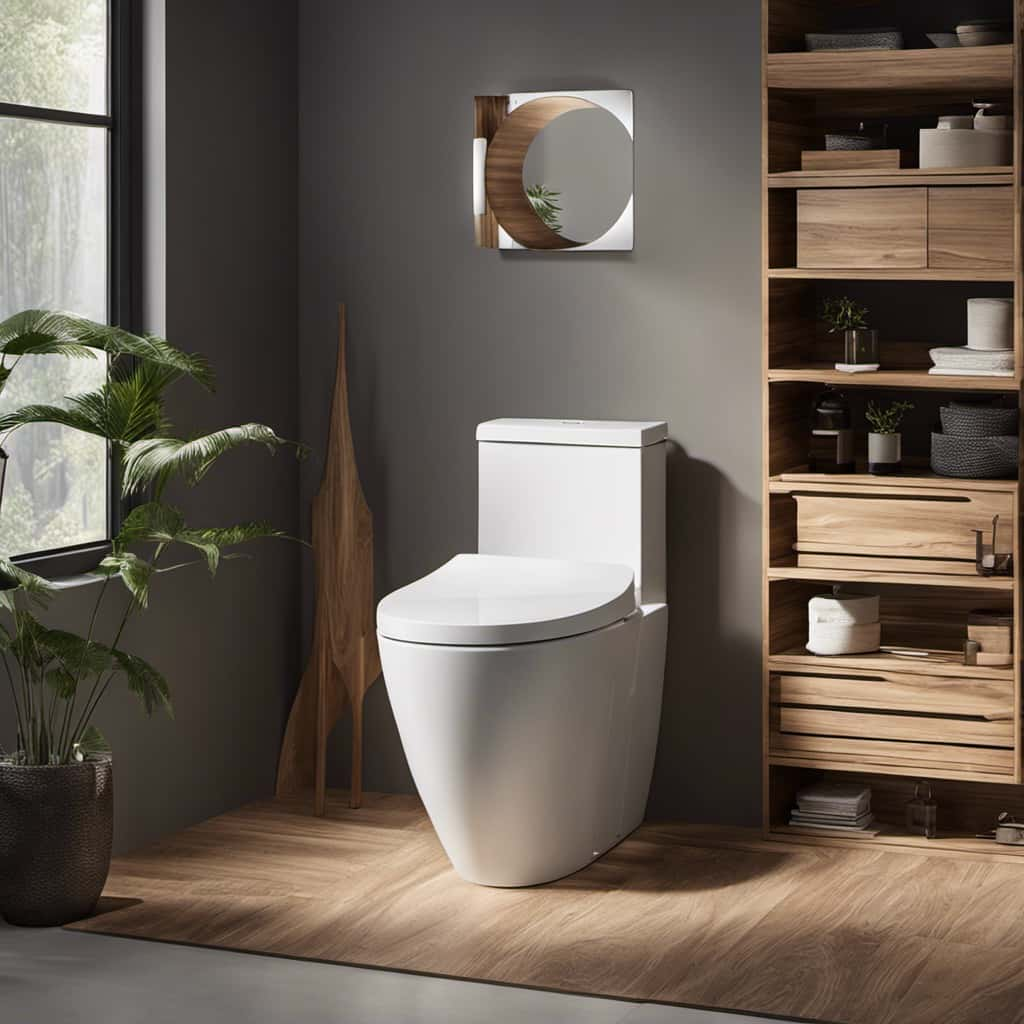
Key Takeaways
- The toilet chain connects the flush handle to the flapper valve, allowing water to flow from the tank into the bowl.
- Proper alignment and adjustment of the chain length are important for efficient flushing.
- Regular maintenance of the toilet chain, including cleaning and lubrication, is necessary for optimal functioning.
- Signs of a damaged toilet chain include weak or incomplete flushes, continuous running of water in the tank, and increased water bills due to wastage.
Anatomy of a Toilet Chain
The anatomy of a toilet chain is a simple mechanism consisting of a single metal link. This chain plays a vital role in the flushing process of a toilet. When the handle is activated, it pulls the chain, which in turn lifts the flapper or flush valve, allowing water to flow from the tank into the bowl.
The length of the chain is adjustable to ensure proper functioning. Maintenance of the toilet chain mechanism is crucial for the overall performance of the toilet. Regular inspection and cleaning of the chain will prevent any buildup of debris or mineral deposits that could hinder its smooth operation.
Additionally, ensuring that the chain is correctly positioned and not too loose or too tight will help maintain proper flushing efficiency. Overall, understanding the anatomy and importance of toilet chain maintenance is essential for the optimal functioning of your toilet.
The Function of the Toilet Chain
To understand the function of the toilet chain, we need to recognize its role in initiating the flushing process.
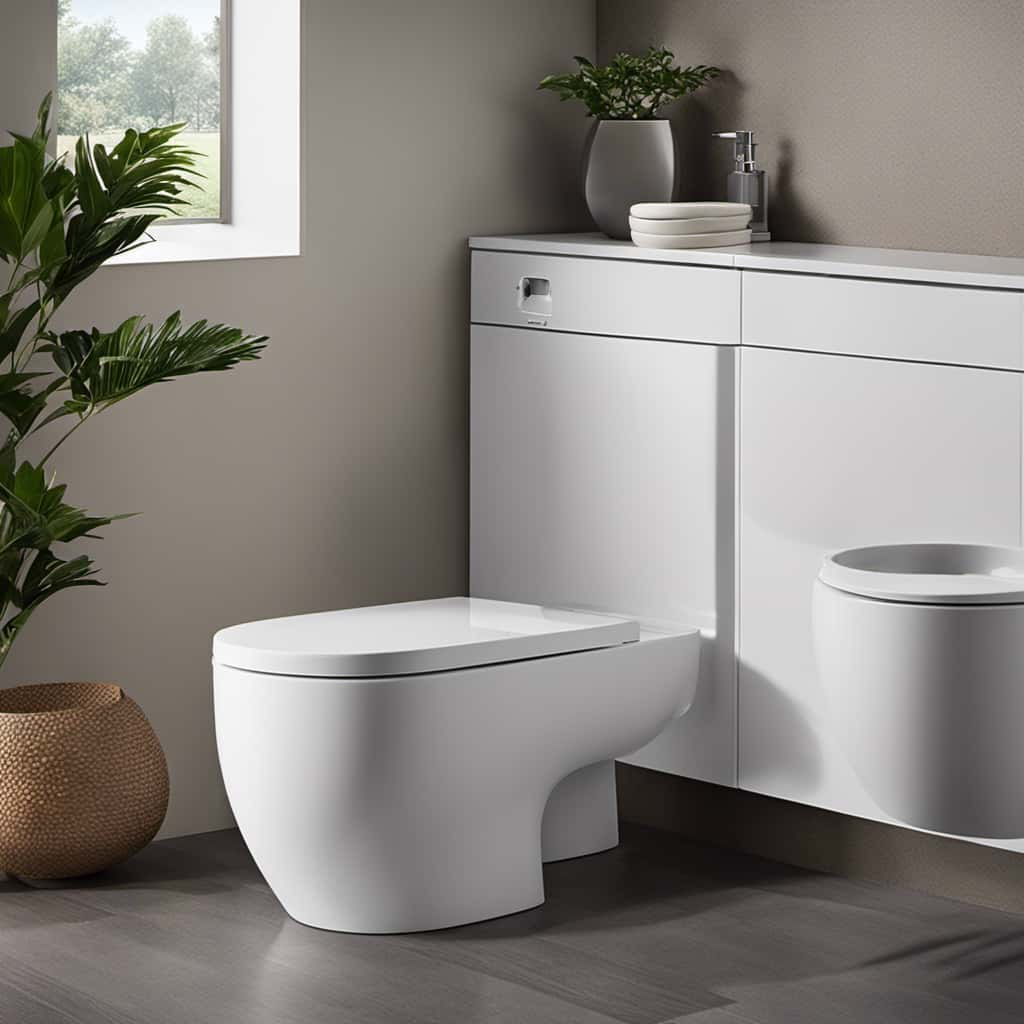
The toilet chain is a crucial component that connects the flush handle to the flapper valve. When the flush handle is pressed, it pulls the toilet chain, lifting the flapper valve and allowing water to flow from the tank into the bowl, resulting in a flush.
Proper toilet chain maintenance is essential to ensure smooth and efficient flushing. It’s important to ensure that the toilet chain is properly aligned, neither too loose nor too tight. If the chain is misaligned, it may interfere with the movement of the flapper valve, leading to insufficient flushing or water leakage.
Now, let’s delve into how the toilet chain initiates flushing.
How the Toilet Chain Initiates Flushing
Now, let’s explore how we can understand the process of flushing by examining the role of the toilet chain. The toilet chain mechanism is a crucial component in initiating the flushing process. When the flush lever is pressed, it pulls on the chain, which in turn lifts the flapper or flush valve at the bottom of the tank. This allows water to rush into the toilet bowl, creating the necessary force to remove waste and refill the bowl with clean water.
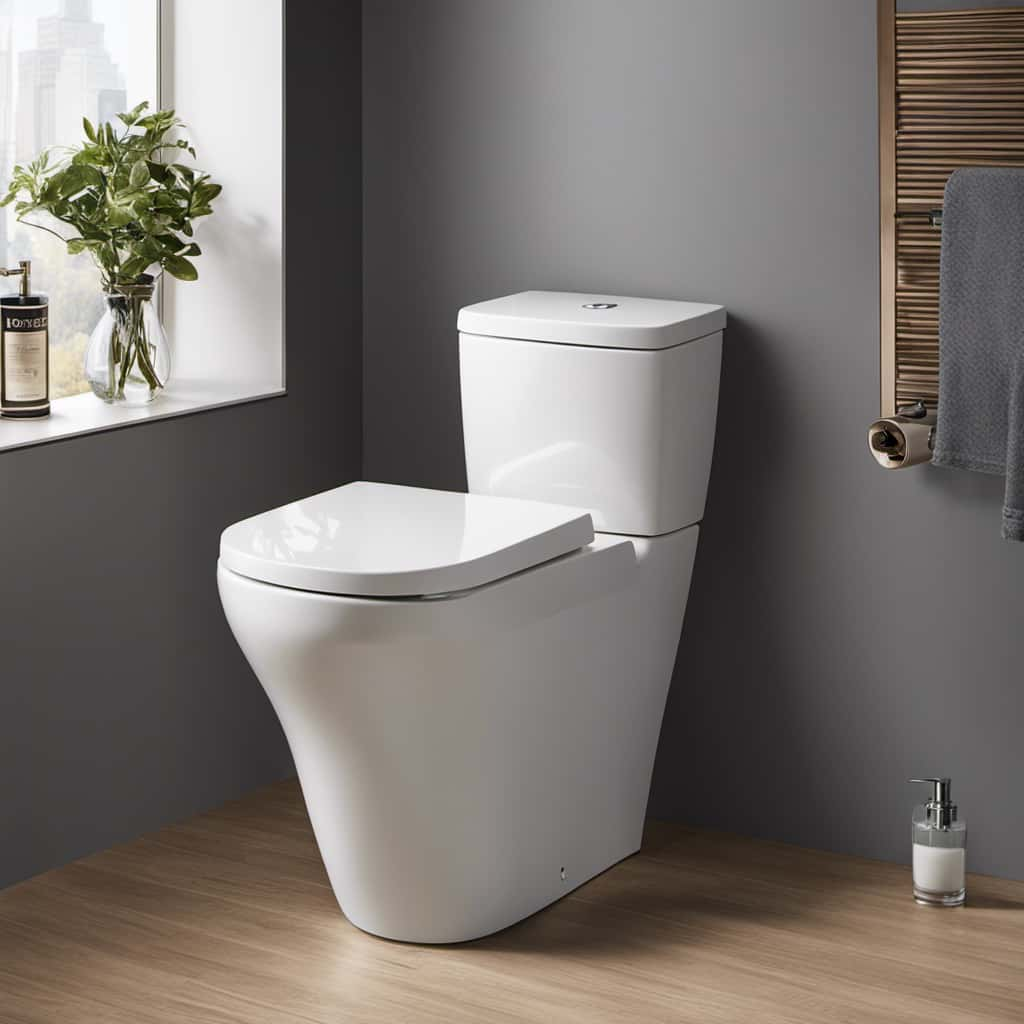
To better understand the process, let’s take a look at the table below:
| Step | Action |
|---|---|
| 1 | Press flush lever |
| 2 | Chain pulls up |
| 3 | Flapper or flush valve lifts |
| 4 | Water rushes into the bowl |
| 5 | Bowl refills with clean water |
Understanding the toilet chain mechanism is essential for proper maintenance and troubleshooting. If you encounter issues with flushing, it may be necessary to inspect and potentially replace the toilet chain.
Troubleshooting Common Toilet Chain Issues
When troubleshooting common toilet chain issues, we can encounter various problems that may affect the proper functioning of the flushing mechanism.
One common issue is a broken or worn-out toilet chain, which can lead to a weak or incomplete flush. In such cases, a toilet chain replacement is necessary.
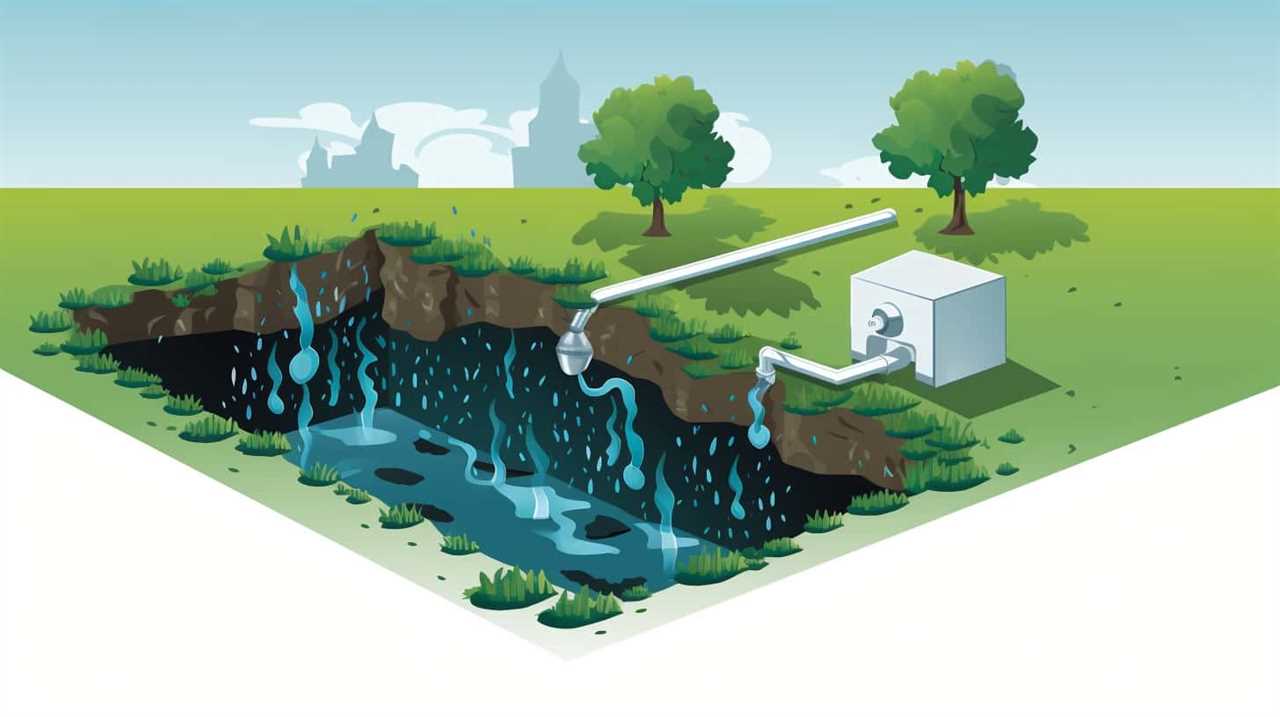
To replace the chain, start by turning off the water supply to the toilet and flush to drain the tank. Next, disconnect the chain from the flush lever and remove the old chain from the toilet flapper. Then, attach the new chain to the flapper and reattach it to the flush lever, making sure it has enough slack to allow for proper movement.
Another common issue is an improperly adjusted toilet chain length. If the chain is too long, it can get caught under the flapper, preventing it from sealing properly. If the chain is too short, it can cause the flapper to stay open, resulting in continuous water flow.
To adjust the chain length, simply move the S-hook to a different link in the chain, ensuring it allows for smooth operation of the flapper.
Tips for Maintaining a Healthy Toilet Chain
To ensure the proper functioning of the flushing mechanism, we can follow these simple tips for maintaining a healthy toilet chain:
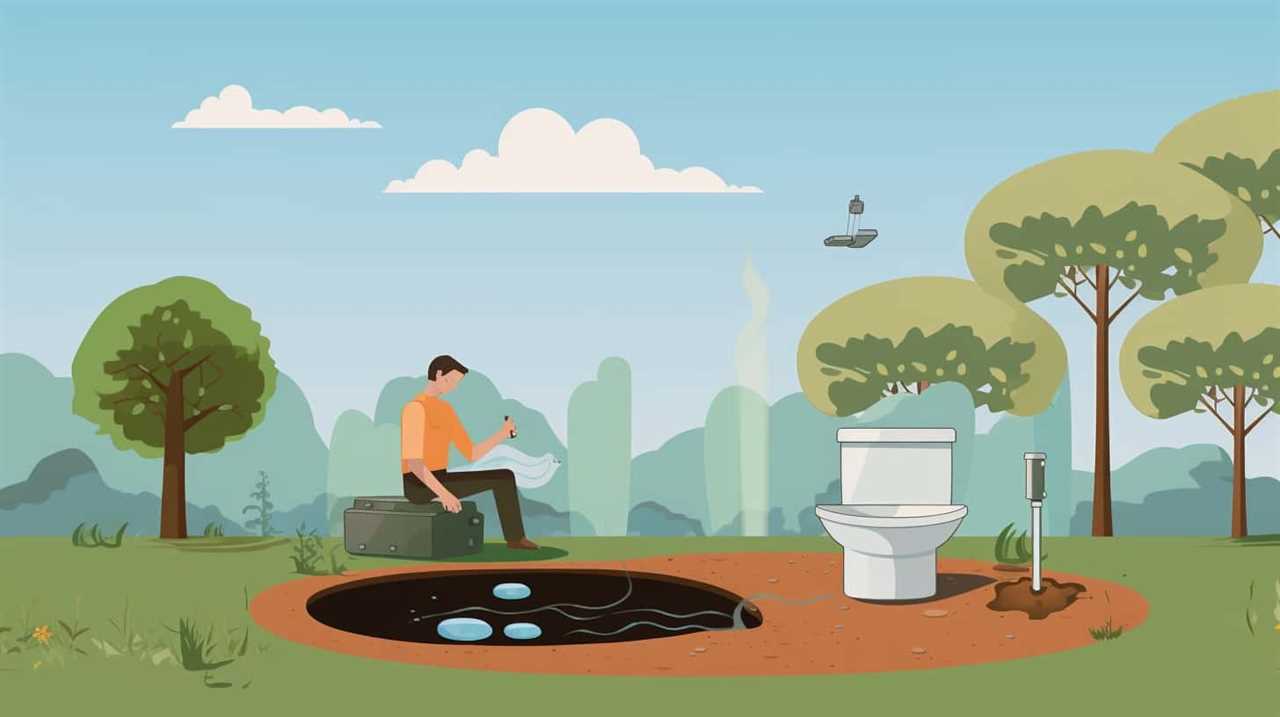
- Regular cleaning: Clean the toilet chain regularly to remove any buildup of mineral deposits or debris. Use a mild detergent and a soft brush or cloth to gently scrub the chain.
- Lubrication: Apply a small amount of silicone lubricant to the toilet chain to keep it moving smoothly. This will prevent friction and ensure that the chain operates without any issues.
- Adjusting the chain length: Check the length of the chain and adjust it if necessary. A chain that’s too loose can prevent proper flushing, while a chain that’s too tight can cause damage to the flushing mechanism.
- Inspecting for damage: Regularly inspect the toilet chain for any signs of wear or damage. Replace the chain if it’s rusted, corroded, or broken to prevent any potential problems.
Proper toilet chain maintenance is essential for the efficient operation of your toilet. By following these tips, you can ensure that your toilet chain remains in good condition and avoids any issues that may affect its performance.
Frequently Asked Questions
How Do I Know if My Toilet Chain Needs to Be Replaced?
To determine if a toilet chain needs replacing, look for signs of wear, such as rust or corrosion. Regular maintenance is crucial as a malfunctioning chain can cause flushing issues.
Can I Use Any Type of Chain for My Toilet?
Yes, specific toilet chain types are designed for optimal performance and durability. Using the right chain ensures proper flushing and prevents issues like clogs. It’s important to choose a chain that is compatible with your toilet mechanism.
How Often Should I Clean the Toilet Chain?
Toilet chain maintenance is crucial for optimal performance. We recommend cleaning the chain every month to prevent buildup of debris and maintain smooth flushing. Follow these best practices for a clean and efficient toilet chain.
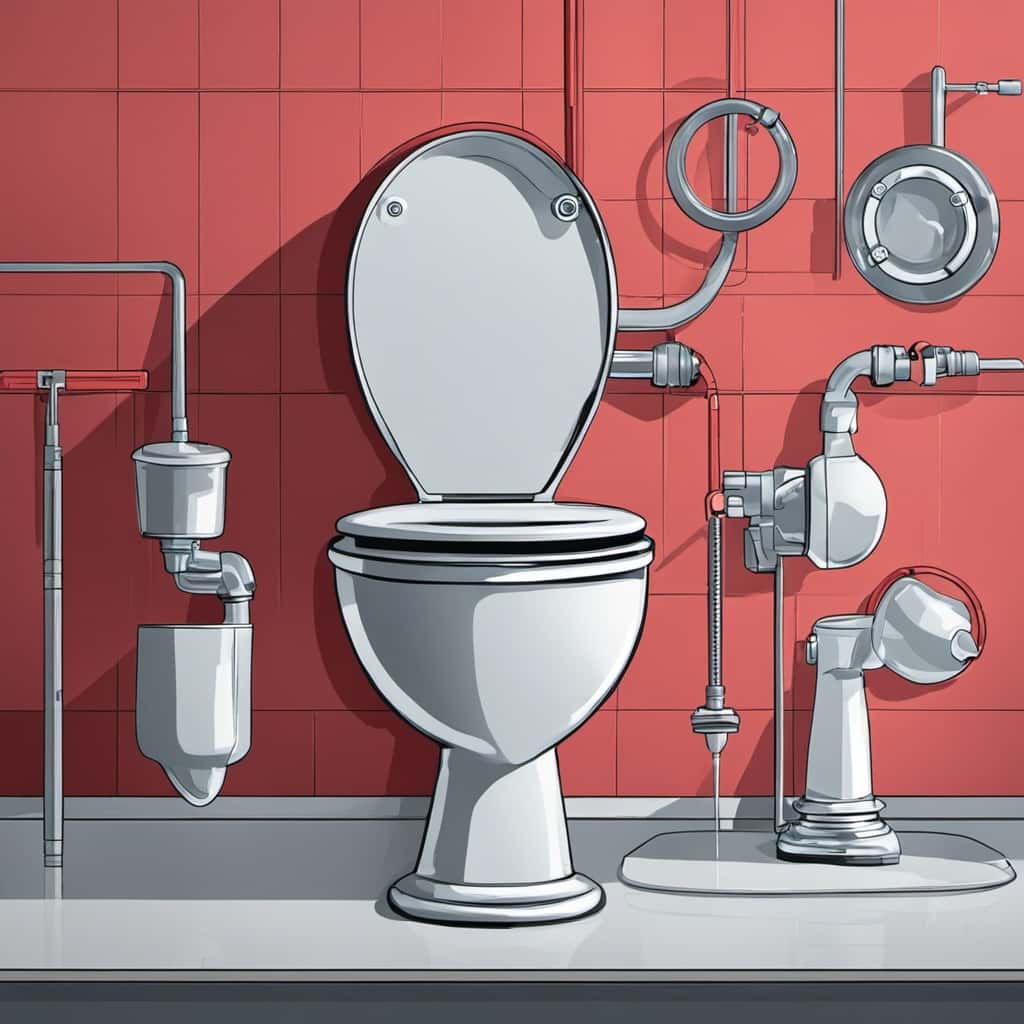
What Should I Do if My Toilet Chain Gets Tangled?
When the toilet chain becomes tangled, we should first locate the source of the tangle. Gently untangle the chain using your fingers or a pair of pliers. If the chain breaks, replace it with a new one.
Can I Adjust the Length of My Toilet Chain?
Yes, we can adjust the length of the toilet chain. However, using a longer chain may increase the risk of tangling and reduce flushing efficiency. It’s important to find the right balance.
Conclusion
In conclusion, the toilet chain plays a crucial role in the flushing mechanism of a toilet. It connects the flush handle to the flapper valve, allowing the water to flow and initiate the flushing process.
Interestingly, did you know that a typical toilet chain is only about 6 inches long? This small yet essential component ensures the proper functioning of your toilet and helps maintain a clean and hygienic bathroom environment.
